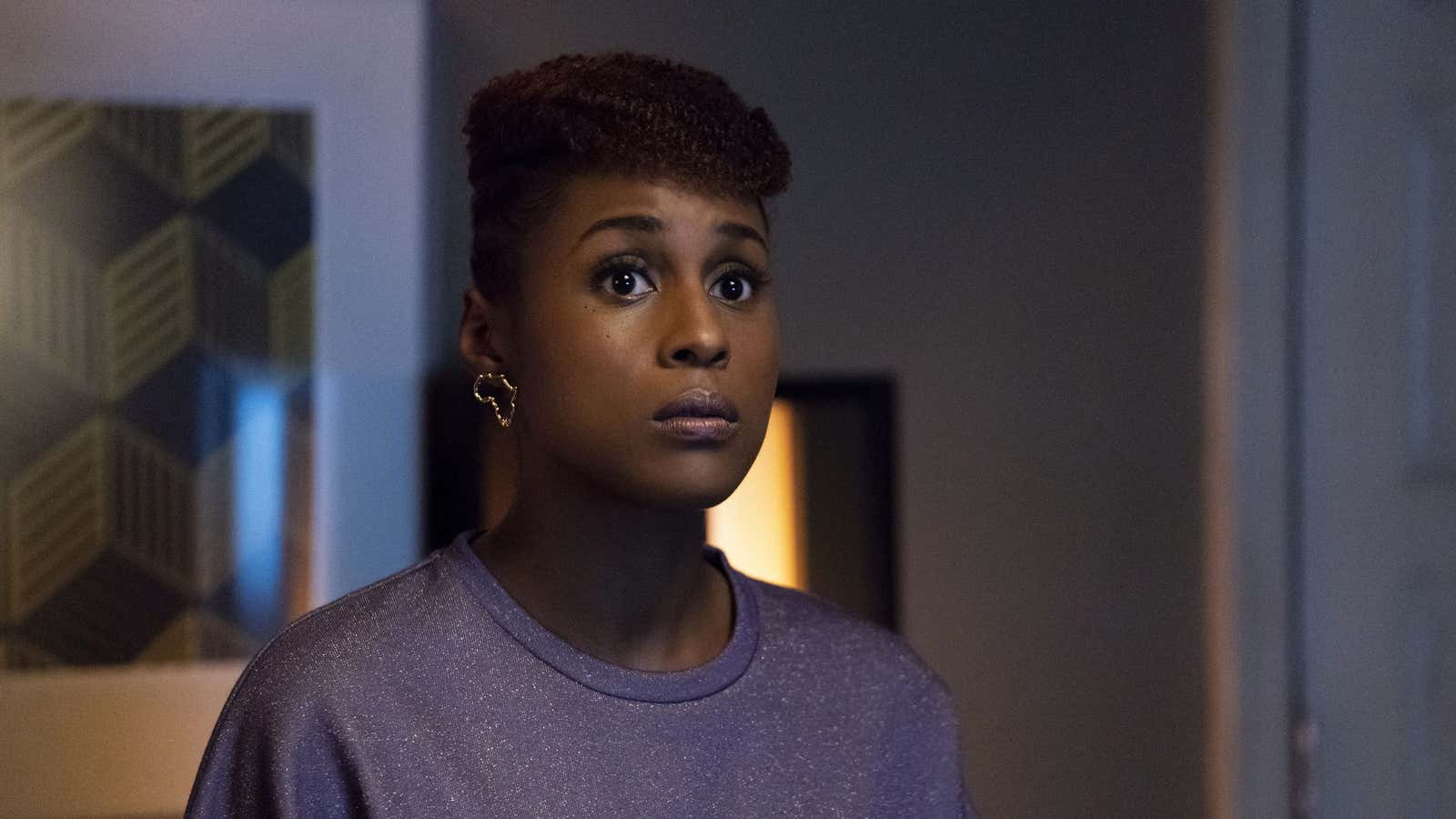This article contains details of the season three premiere HBO’s Insecure, debuting Aug. 12.
“Hi! Elijah?” says Issa in the opening moments of Insecure’s audacious third season, to a man clambering into the back of her car.
“That’s my name,” he replies with a bleary grin, and promptly vomits.
When we left Issa at the end of the second season of the HBO comedy, she’d finally said goodbye to Lawrence, her onetime live-in boyfriend and lingering love interest, in a devastating scene in their empty apartment. She’d missed a promotion, been taken out of the field at work, and could no longer afford to stay in her apartment in the rapidly gentrifying Inglewood (ahem, “I-wood”) section of Los Angeles. And of all doorsteps to show up on newly homeless, Issa chose Daniel’s—the old flame she cheated on Lawrence with in season one.
The third season tackles all the ambiguity and complicated feelings of these transitional life moments head-on, with a genius plot device and very literal vehicle: Issa’s Chevrolet, which she’s using to drive Lyft.
Throughout the first episode, we return to Lyfting with Issa. Between challenging moments as the only black employee at We Got Y’all—a non-profit to help school-kids of color, where white savior complex runs rampant—and at home with her new roommate, Daniel, whose noisy sexual escapades drive Issa out of the apartment and into her new life as a chauffeur.
Molly, too, is avoiding her own ambiguous situation. She’s still sleeping with Dro, despite her discomfort with his open marriage, and has time to kill before a late date with him to celebrate her new job, despite trying to set clearer boundaries when a previous overnight ended with a call from his wife.
Issa’s Lyft serves not only as a metaphorical plot device—characters semi-aimlessly traversing the city instead of finding their own real destinations—it also reflects the actual hazards and pitfalls of driving in the ride-sharing economy.
A pair of twenty-somethings heading to the club make Issa and Molly recall their younger, more carefree selves, before they leave Issa a 5-star rating, no tip, and a review saying she reminds them of their auntie.
When Issa and Molly pick up an attractive man (“Nathan with the face!” says Molly) on his way to dinner, they flirt and reroute him to get tacos together instead. It seems like a solid plan until they pick up a voluminous second passenger, who squeezes his way into the back of the car. When Issa asks him to extinguish a blunt and he refuses, Nathan-with-the-face launches himself onto the guy. The two proceed to pound on one another in the backseat, while Issa screams and swerves.
The scenes in Issa’s Lyft don’t do much to move the plot along, but that’s precisely what makes them feel compelling, different, and real. They also give us a chance to experience Los Angeles (which increasingly feels like a character unto itself in the show) as Angelenos constantly do, from the confines of a car.
As the show matures in its third season, and its characters and their problems grow more complex, the Lyft conceit was a clever way to give them some breathing room, and to embrace the liminal, in-between spaces.
This story has been updated. An earlier version included a quote from Issa Rae’s character in which she used an offensive word.
